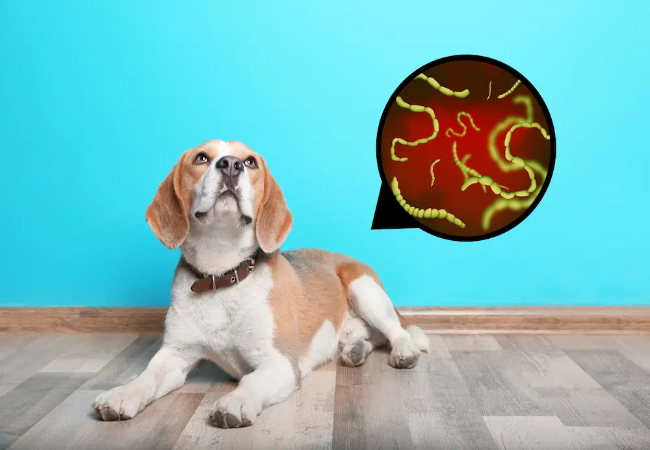Vet Guide to Canine Tapeworms 2025: Prevention, Treatment & Care 🐕🦺

In this article
Vet Guide to Canine Tapeworms 2025: Prevention, Treatment & Care 🐕🦺
By Dr. Duncan Houston BVSc
🔍 What Are Tapeworms?
Tapeworms are flat, segmented intestinal parasites most commonly caused by Dipylidium caninum in dogs. These worms attach to the small intestine and grow up to 18 inches long, shedding segments (proglottids) that resemble rice or cucumber seeds. Other types (e.g., Taenia) come from rodents or rabbits.
🧬 Lifecycle & Transmission
- Tapeworm segments exit in feces.
- Flea larvae or rodents ingest eggs.
- Flea matures; tapeworm larvae develop inside.
- A dog swallows an infected flea during grooming; larvae mature into adults in ~4–6 weeks.
**Important note:** Dogs cannot contract tapeworms by ingesting eggs directly—an intermediate host is required.
🐕 Signs & Symptoms
- Rice-like proglottids around the anus, in stool, or on bedding.
- Butt-scooting, licking, and itching around the rear.
- Occasional mild digestive upset, weight loss in puppies, or heavy infestations.
- Rarely, vomiting worms.
Generally, adult dogs remain clinically healthy.
🩺 Diagnosis
Diagnosis primarily relies on visible proglottids rather than routine fecal exams, which often miss them.
Your vet may confirm with fecal flotation, but this has limited sensitivity due to intermittent shedding.
💊 Treatment Options
Treatment is safe, effective, and fast-acting:
- Praziquantel: dewormer of choice, available as oral tablets or injections.
- Niclosamide: an alternative but less commonly used.
Dogs treated correctly should shed no live segments post-treatment.
🔄 Prevention & Recurrence
- Monthly flea control (topical or oral) is vital to interrupt the lifecycle.
- Avoid feeding raw prey or allowing access to rodents for Taenia prevention.
- Use a combination heartworm-subtype preventives that include praziquantel.
🧼 Zoonotic Risks & Household Safety
Human infection (especially in children) is rare but possible through accidental ingestion of infected fleas.
Keep living areas clean, dispose of feces promptly, wash hands after pet contact, and manage fleas in the home.
🏠 Home Care Tips
- Check rear areas and bedding daily for proglottids.
- Keep up flea treatment and check for ticks or lice.
- Maintain good hygiene—wash pet beds regularly.
- Prompt veterinary check-ups if any signs appear.
📅 Recommended Deworming Schedule
| Dog’s Age | Recommended Deworming |
|---|---|
| Puppy | At 2, 4, 6, 8 weeks, then monthly until 6 months. |
| Adult | At least once/year, fecal check and tapeworm deworming if fleas are present. |
| High-risk | Every 3 months or as the vet recommends. |
🔬 Why 2025 is Better
- Pets now receive combined parasitic preventive, housing flea, tick, heartworm, and tapeworm protection.
- New flea products quickly eliminate the intermediate host.
- Telehealth tools like Ask A Vet offer prompt advice on noticing early signs or treatment follow-ups.
🛡️ How Ask A Vet Help
- Ask A Vet: Round-the-clock vet access, ideal for urgent tapeworm concerns or vetting treatment decisions.
👨⚕️ Final Thoughts from Dr Duncan
Tapeworms in dogs rarely cause serious illness, but proper diagnosis, effective treatment, and strong flea control are key to keeping your pup healthy—and your home flea-free. In 2025, advanced dewormers, integrated preventives, and tele-vet support make prevention and treatment easier than ever.
Visit AskAVet.com or download the Ask A Vet app for 24/7 veterinary support and pet care guidance.






